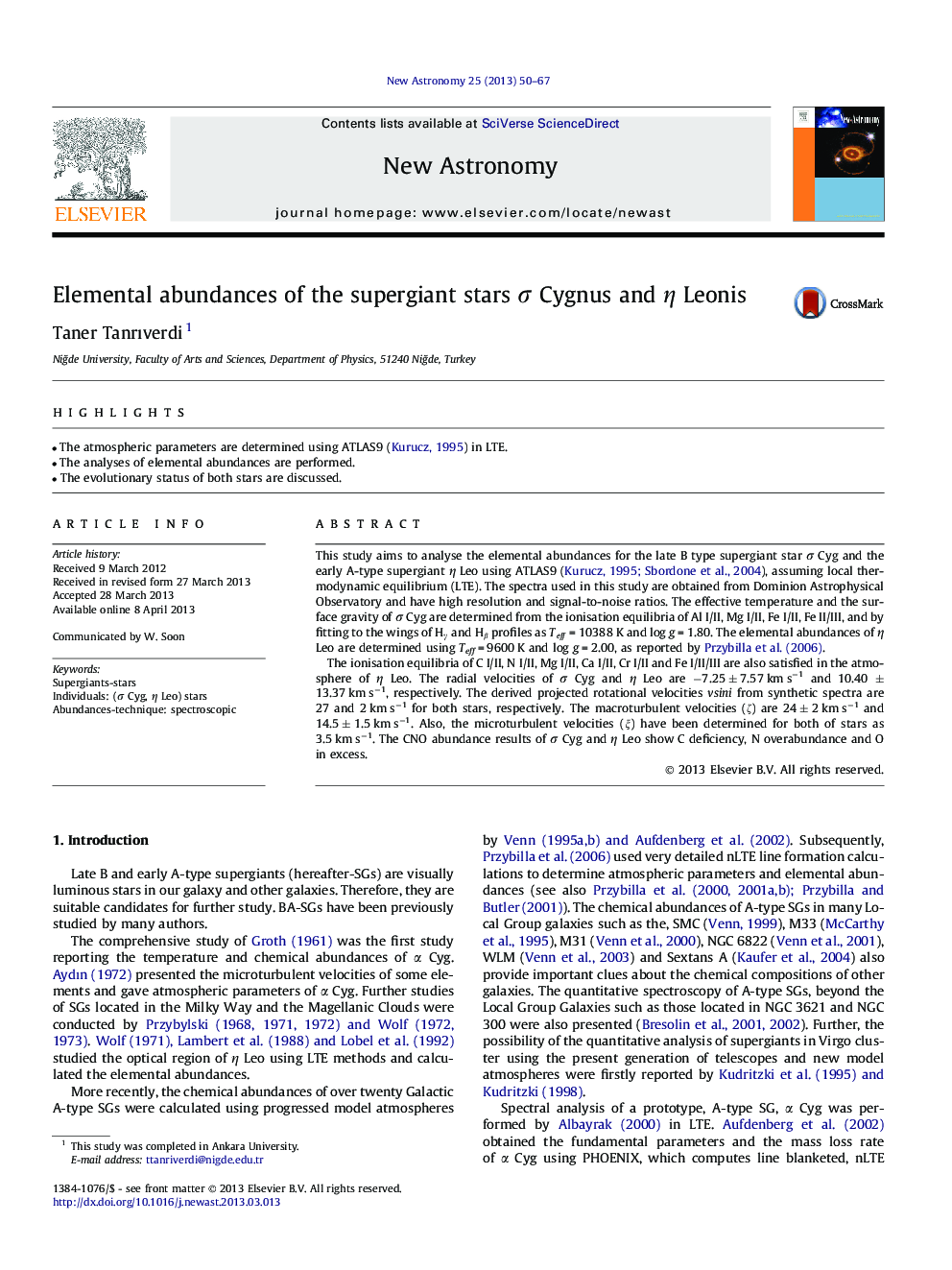| Article ID | Journal | Published Year | Pages | File Type |
|---|---|---|---|---|
| 1779032 | New Astronomy | 2013 | 18 Pages |
•The atmospheric parameters are determined using ATLAS9 (Kurucz, 1995) in LTE.•The analyses of elemental abundances are performed.•The evolutionary status of both stars are discussed.
This study aims to analyse the elemental abundances for the late B type supergiant star σσ Cyg and the early A-type supergiant ηη Leo using ATLAS9 (Kurucz, 1995 and Sbordone et al., 2004), assuming local thermodynamic equilibrium (LTE). The spectra used in this study are obtained from Dominion Astrophysical Observatory and have high resolution and signal-to-noise ratios. The effective temperature and the surface gravity of σσ Cyg are determined from the ionisation equilibria of Al I/II, Mg I/II, Fe I/II, Fe II/III, and by fitting to the wings of HγHγ and HβHβ profiles as TeffTeff = 10388 K and log g = 1.80. The elemental abundances of ηη Leo are determined using Teff = 9600 K and log g = 2.00, as reported by Przybilla et al. (2006).The ionisation equilibria of C I/II, N I/II, Mg I/II, Ca I/II, Cr I/II and Fe I/II/III are also satisfied in the atmosphere of ηη Leo. The radial velocities of σσ Cyg and ηη Leo are −7.25 ±± 7.57 km s−1 and 10.40 ±± 13.37 km s−1, respectively. The derived projected rotational velocities vsini from synthetic spectra are 27 and 2 km s−1 for both stars, respectively. The macroturbulent velocities (ζζ) are 24 ±± 2 km s−1 and 14.5 ±± 1.5 km s−1. Also, the microturbulent velocities (ξξ) have been determined for both of stars as 3.5 km s−1. The CNO abundance results of σσ Cyg and ηη Leo show C deficiency, N overabundance and O in excess.
